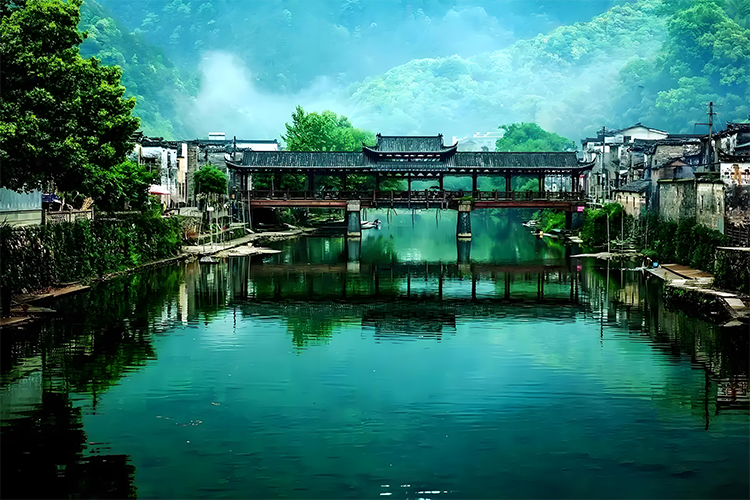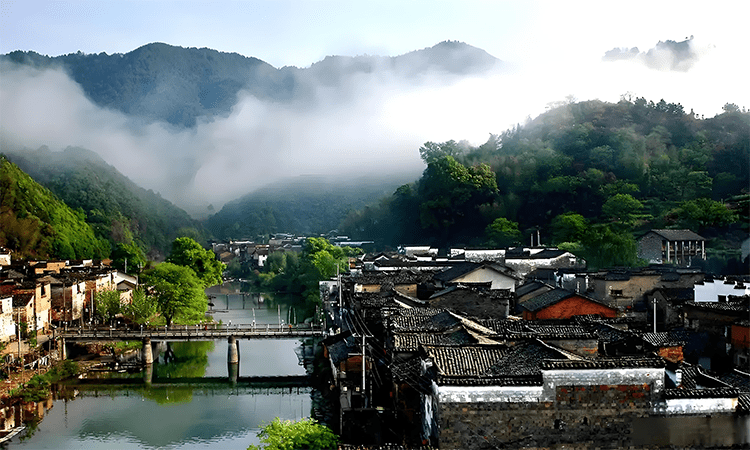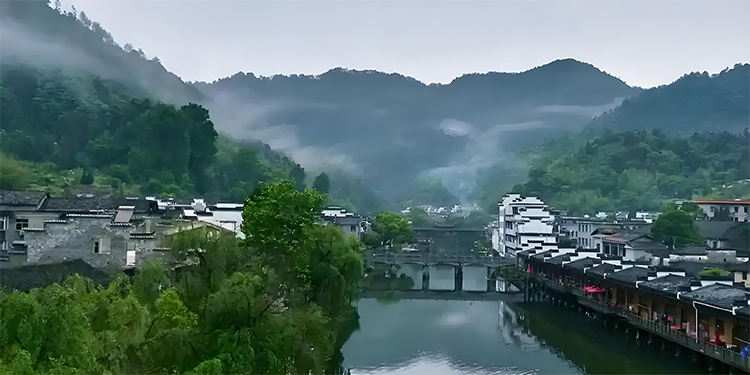Tea Picking at Yaoli Scenic Area: Discover Porcelain Origins & Serene Escapes
Hidden among the green hills and clear waters around Jingdezhen, China’s porcelain capital, Yaoli Scenic Area feels like a place time has treated gently. Known as the naming place of the world’s porcelain clay—kaolin—Yaoli unfolds as a three-dimensional painting of ancient kiln fires, verdant forests and Hui-style architecture. Walk on slate paths, touch the weathered brick walls of Ming and Qing shops, and listen to the roar of Nanshan Waterfall in the primeval woods: every corner tells the story of “porcelain source, tea homeland, and sea of forest.”
1. Nature and Culture: Yaoli’s Soul
Yaoli’s charm lies in the perfect fusion of natural gifts and deep cultural roots. As a national 4A scenic area covering 195 square kilometers, it preserves one of China’s most intact ceramic industrial heritage systems. With a 94% forest coverage, Yaoli offers a “natural oxygen bar” close to urban areas. When morning mist cloaks the upturned eaves of Hui-style buildings, or when six-hundred-year-old ginkgo leaves blanket ancient kiln sites, you can understand why China National Geography called this place “the most poetic porcelain culture corridor.”
2. A Millennial Porcelain Epic
The global ceramic term “kaolin” actually comes from the Gaoling deposits at Dongbu Village in Yaoli. Walking through the Tang-period dragon kiln remains, you can still make out the stacked clamp-walls used by kiln workers. Along the Ming and Qing commercial street, the openwork woodcarving of the Shigang Shenglan residence recalls the glory of Hui merchants trading ceramics, while the “Jinshi Jidi” plaque above the Cheng clan ancestral hall testifies to a culture of scholarship. Also notable is the former headquarters where Marshal Chen Yi reorganized the New Fourth Army in 1938; the little gray-brick rooms preserve oil lamps and battle maps that quietly tell wartime stories.

3. The Forest Realm’s Four-Season Symphony
The Wanghu ecological zone hosts primeval evergreen broadleaf forests that feel like a plant kingdom; millennial yews share branches with sightings of the Chinese merganser skimming water. In spring, join seasonal farmers to pick Yaoli cliff-tea; in summer, cool off in the emerald pools below Nanshan Waterfall; in late autumn, chase the reflected colors in Shimen Gorge; in winter, you may encounter a sea of clouds spilling over blue tiles and white walls. Photographers should not miss the Wuhua Mountain viewpoint at 5:00 a.m.: when the first light ignites the rolling bamboo sea, you’ll see the landscape glow.
4. Must-Do Immersive Experiences
Travel in Yaoli goes beyond sightseeing:
– Hand-throwing pottery: At a restored dragon-kiln workshop, master artisans teach you to shape simple wares from local kaolin.
– Tea aesthetics: Follow an intangible cultural heritage inheritor to learn picking and withering techniques for Fuliang-style black tea.
– Culinary discoveries: Sit in a century-old courtyard and taste sour Chinese date tofu and glutinous rice alkaline cakes made with mountain spring water.
– Easy hiking: Walk 3 km along the ancient Ya River post road, passing seven Song-dynasty rice-pound sites and a series of waterfalls.

5. Practical Travel Guide
Best seasons: April–May (tea season with mist) and September–November (best autumn colors). Bring mosquito repellent in summer.
Getting there:
– By air: Luojia Airport, Jingdezhen — about a 1-hour drive (60 km).
– By rail: High-speed train to Jingdezhen North Station, then the “Jingdezhen–Yaoli” tourist shuttle (about 1.5 hours).
– By car: Navigate to “Yaoli Tourist Center”; the mountain road toward Wuyuan offers excellent scenery.

Tickets and services:
– Combo ticket 120 RMB (includes five major attractions + electric shuttle).
– English audio guide rental 40 RMB/day; international student ID holders enjoy half price.
– Many guesthouses are renovated historic homes; we recommend staying at “Yaoli Academy” for a carved, large-bed experience.
When evening lanterns tint the Ming and Qing street red and you sip Fuliang tea under a hundred-year camphor tree, you’ll grasp the glaze color metaphor of “sky after rain.” Yaoli isn’t a place for rushing checklists; it’s a living museum worth lingering in—touch the warmth with your fingertips and measure history with your steps.


